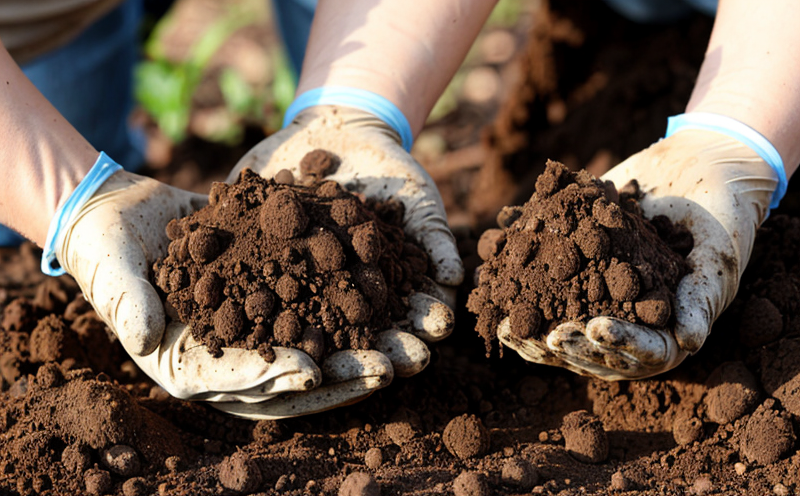ISO 17619 Soil Enzyme Urease Activity Testing
The ISO 17619 standard provides a robust methodology for determining urease activity in soil, which is crucial for understanding the biological processes within soils. Urease activity plays an important role in nitrogen cycling and can influence plant growth and soil health. This testing method ensures consistency and reliability across different laboratories by providing standardized procedures.
Urease is an enzyme that catalyzes the hydrolysis of urea into ammonia and carbon dioxide, a reaction critical for nitrogen release from organic matter. Soil urease activity varies depending on environmental factors such as temperature, moisture content, pH level, and the type of soil microorganisms present. Therefore, accurate measurement of urease activity is essential for assessing the overall health and productivity of agricultural soils.
The ISO 17619 protocol involves several key steps including sample collection, preparation, incubation conditions, substrate addition, measurement of ammonia produced, and calculation of enzyme activity based on standard curves. Compliance with this international standard ensures accurate results that are comparable across various testing facilities globally.
This service is particularly useful for quality managers who need to ensure consistent soil health metrics; compliance officers looking to verify adherence to regulatory standards related to agricultural practices; R&D engineers focusing on developing new fertilizers or soil amendments; and procurement professionals sourcing raw materials with known enzymatic activities.
Accurate urease activity measurements can help predict how efficiently nitrogen will be available for crops, inform decisions about optimal application rates of fertilizer, and guide sustainable farming practices. Understanding these parameters also aids in diagnosing potential issues such as nutrient imbalances or microbial dysbiosis within the soil ecosystem.
Scope and Methodology
| Step | Description |
|---|---|
| Sample Collection | Collect representative samples from various depths of the soil profile. |
| Preparation | Precisely weigh and grind the collected soil into a fine powder. |
| Incubation | Transfer an aliquot to pre-washed glass vials, add buffer solution and urea substrate. |
| Ammonia Measurement | Analyze the released ammonia using colorimetric methods or gas chromatography. |
| Data Analysis | Calculate urease activity based on the rate of ammonia production over time. |
The methodology outlined in ISO 17619 ensures that all laboratories follow a consistent approach, thereby enhancing reproducibility and comparability of results. By adhering to this standard, we can provide reliable data for decision-making processes related to soil health management.
Benefits
- Precision: Ensures accurate measurement of urease activity through standardized procedures.
- Consistency: Provides uniform results regardless of the laboratory conducting the test.
- Compliance: Meets international regulatory requirements for soil quality assessment.
- Efficiency: Streamlines workflows by reducing variability and rework due to inconsistent testing methods.
- Transparency: Offers clear guidelines on how tests should be conducted, promoting trust between stakeholders.
- Insightful Reporting: Generates comprehensive reports that can inform strategic decisions about soil health management.
The ability to accurately measure urease activity contributes significantly to better understanding of the nitrogen cycle within soils. This information is vital for optimizing agricultural practices and enhancing overall environmental stewardship.
International Acceptance and Recognition
The ISO 17619 standard has gained widespread acceptance among researchers, government agencies, and private sector organizations worldwide due to its rigorous validation process and alignment with global best practices in soil science. Adoption of this standard facilitates seamless communication between different countries involved in agricultural research or regulation.
Many countries have adopted ISO 17619 as their national standard for determining urease activity because it provides a reliable method that can be used consistently across borders. This harmonization helps reduce barriers to trade and cooperation on issues related to soil health management, making the implementation of sustainable agricultural practices more accessible.
Furthermore, compliance with this international standard demonstrates commitment to maintaining high-quality standards in soil analysis, which is increasingly important as global food security challenges continue to evolve. By adhering to such recognized protocols, laboratories contribute positively towards achieving these goals while ensuring accurate and reproducible results.





